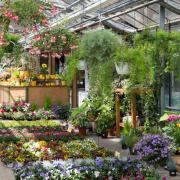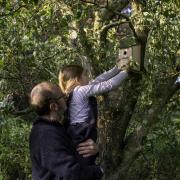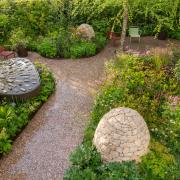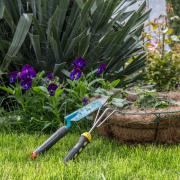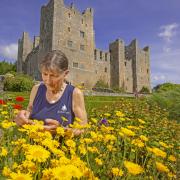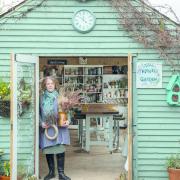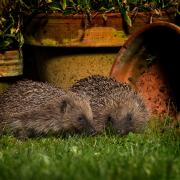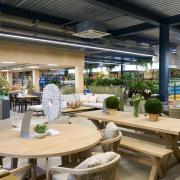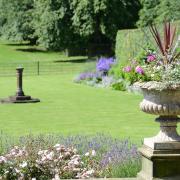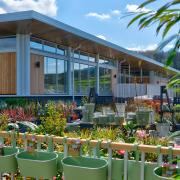An exhibition reveals how gardening helped British prisoners survive punishing times during the Great War

Growing pansies and violets in biscuit tins was one way wartime prisoners held in an internment camp behind enemy lines endured appalling living conditions. Their story is told in an exhibition ‘Behind Barbed Wire’ at RHS Harlow Carr Gardens, Harrogate.
One of the prisoners was the grandfather of Sue Padgham, librarian at Harlow Carr. ‘My grandfather, Thomas Thomas, was detained at Ruhleben because he was working in Hamburg for the Southern Cotton Oil Company on the day war broke out.
‘He was detained at the camp for two years, then unexpectedly released in January 1916 along with 69 other men - many from fishing vessels captured in the North Sea – plus children and 10 members of the Royal Army Medical Corps. I know he travelled home to England by merchant ship from Flushing but I’m not sure why he and the others were chosen to be released - perhaps because of ill health or because they no longer posed a security risk.’
Thomas Thomas was one of more than 5,000 British men and boys interned at Ruhleben, an old racecourse outside Berlin, which was described when it opened as ‘scandalously inadequate’ and ‘not fit to keep pigs in’. Working together they transformed the camp, overcoming terrible conditions to create a self-governing society within its fences. The Ruhleben Horticultural Society was a huge part of this.

‘What started with a handful of green-fingered internees growing pansies and violets in biscuit tins to disguise their bleak surroundings soon developed into a fully fledged horticultural society, its members eventually numbering over 900,’ said Sue.
‘Gardening offered a rare opportunity to shape an environment that was largely out of their control. The plants did not just disguise barbed wire fences they helped prisoners to forget the fences as they lost themselves in the simple but absorbing task of growing things.’
The society managed to feed the camp’s inmates and organise RHS-standard flower shows to boost morale. A potting shed and glasshouse were built and a steam heating system was rigged up from the camp’s boiler, allowing inmates to grow ‘a wonderful crop of melons and tomatoes’. At their flower shows, prizes were awarded for vegetables, cut flowers, sweet peas, table decorations, button holes, window boxes and gardens. Promenade beds were planted alongside the barbed wire fences and some of the barrack gardens were very elaborate with arches, frames and other supports. Members grew a total of 52 varieties of sweet pea and proudly sent photographs of their gardens back to the RHS.
The RHS sent seeds, bulbs and advice to the Ruhleben prison, deep behind enemy lines. The two societies corresponded throughout the war, with internees sending back the photographs, letters, drawings and reports which make up the majority of the exhibition. The exhibition also features information and material gathered as a result of a public appeal that the RHS Lindley Library ran in 2014 when the exhibition was first displayed to mark the centenary of the outbreak of World War One.

Fiona Davison, head of libraries and exhibitions at the RHS, said: ‘The story of the Ruhleben Horticultural Society is completely unique, a vivid example of the way that gardening can promote health and happiness, even in the most challenging circumstances.’w
Gardens Behind Barbed Wire runs from January 7th to February 26th in RHS Harlow Carr’s Bath House. A World War II ‘Dig for Victory’ exhibition is also on in the Harlow Carr library, offering visitors a chance to find out more about the role of gardening throughout both world wars.






